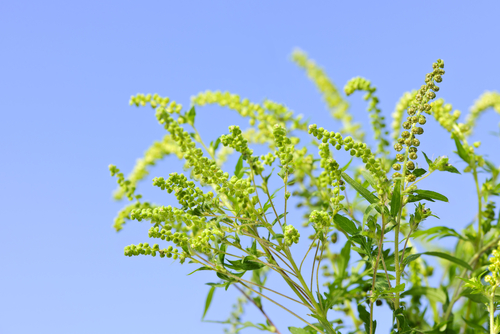Autumn has arrived, and so has the ragweed. These soft-stemmed plants grow throughout North America and present in 17 different species. Sunny, rural areas are the preferred growing places for ragweed, which releases its pollen as a fertilizer for future plants. During the pollination process, which can start as early as July and last until late October, the particles released can travel over long distances, driven by the wind. This is when many people will experience allergy symptoms.
What is Ragweed Allergy?
The pollen produced by ragweed plants is a large contributor to seasonal allergies. When people inhale the pollen, their immune systems mistake the substance for an invader, like bacteria or a virus. This sets off a chemical reaction to fight the pollen, even though it is not harmful to the body. The result is a runny nose, sneezing and itchy, red eyes. It is estimated that 25 percent of Americans are allergic to ragweed, and the issue is lifelong once it begins. A combination of shots, medications and changes to lifestyle are helpful for managing ragweed allergy.
Ragweed Allergy Symptoms
The severity of ragweed allergy will vary, depending on climate and season. Typically, it will present with the following symptoms:
- Sneezing, runny nose and congestion. This will start at the first contact with the pollen and escalate quickly.
- Watery and itchy eyes. The pollen irritates the eyes and will also cause them to become red and sticky.
- Pressure in the sinuses. This is due to inflammation in the nasal cavities caused by the pollen and may result in facial pain.
- Scratchy throat. The mucous membranes in the throat will have a gritty feel and will become further inflamed by post nasal drip, if present.
- Wheezing and coughing. Ragweed is a lung irritant and can exacerbate asthma.
- Discolored skin under the eyes. This is known as an “allergic shiner” because it resembles a black eye.
- Allergic eczema. This is a rash that is painful and extremely itchy, resulting in tiny blisters and bumps. It can take several weeks for allergic eczema to resolve.
- Poor quality of sleep. The discomfort of ragweed allergy can interfere with the ability to fall asleep, leading to fatigue and lower productivity during the day.
- Odors, smoke and other pollutants. When the outdoor air quality is compromised and mixes with ragweed pollen, there can be a very strong response by the immune system with extreme symptoms.
For those who need help managing their ragweed allergy, The Bernstein Allergy Group in Cincinnati, Ohio, is standing by to answer questions and to explore options for treatment. Call 513-931-0775 for an appointment or visit the website for more information.

